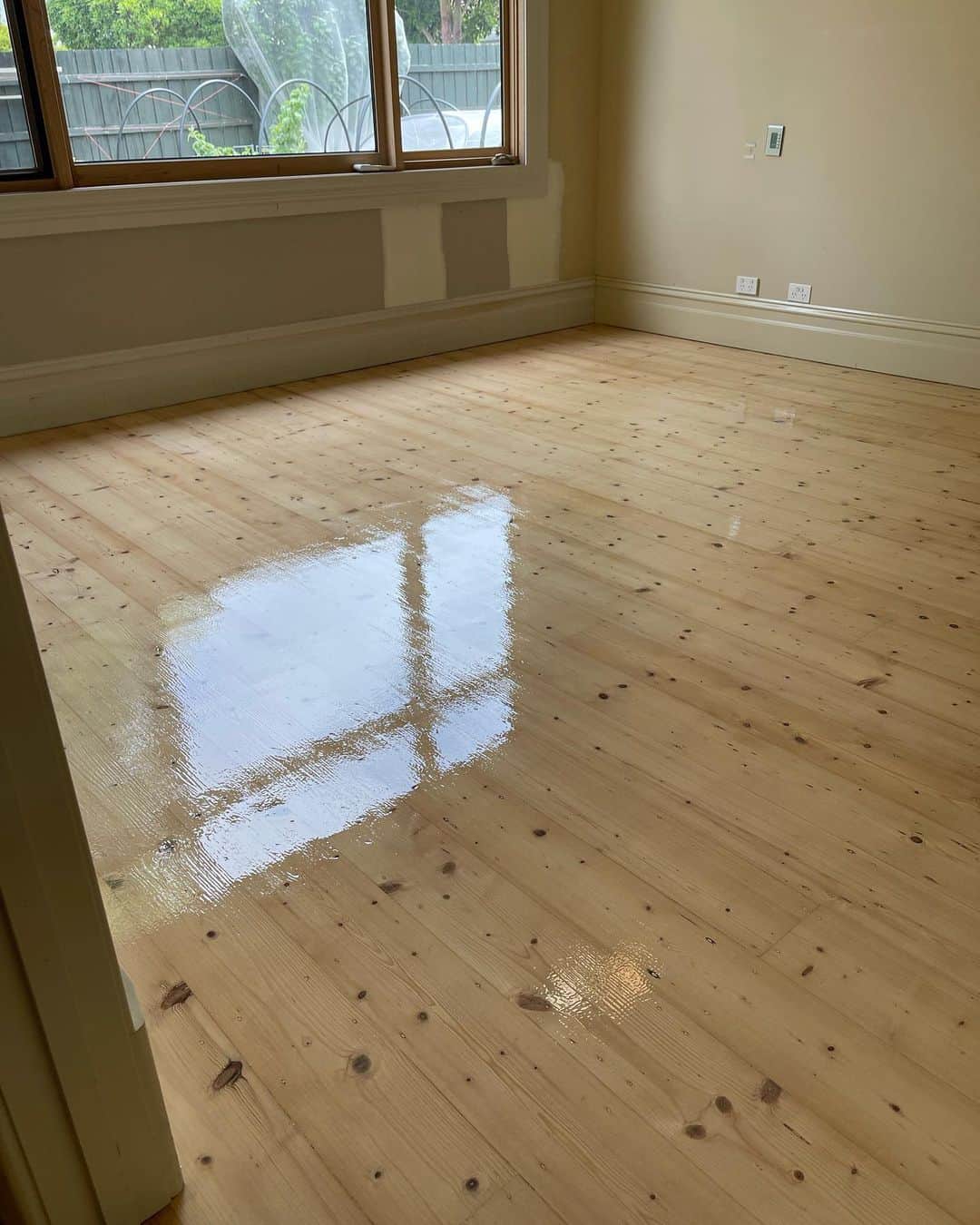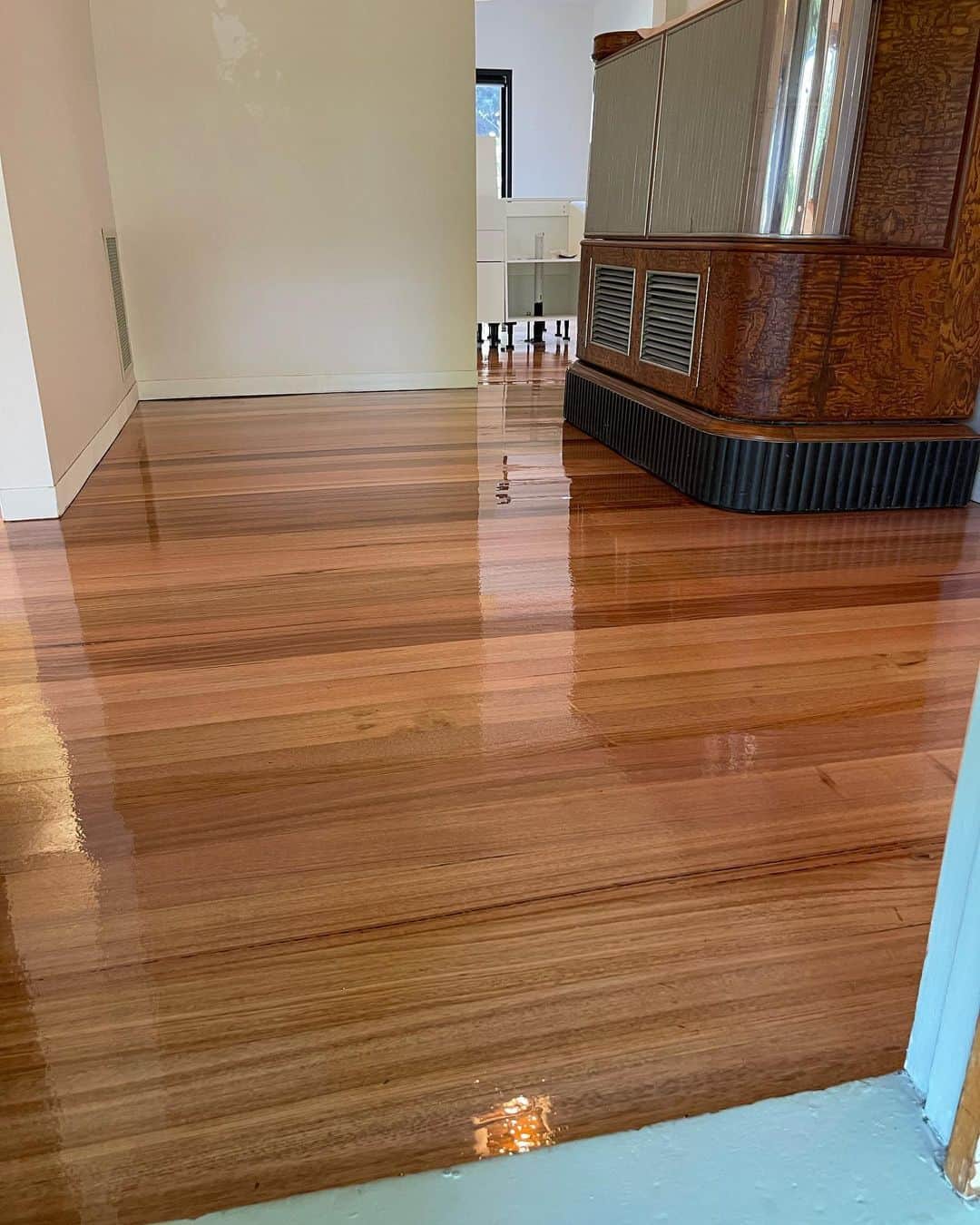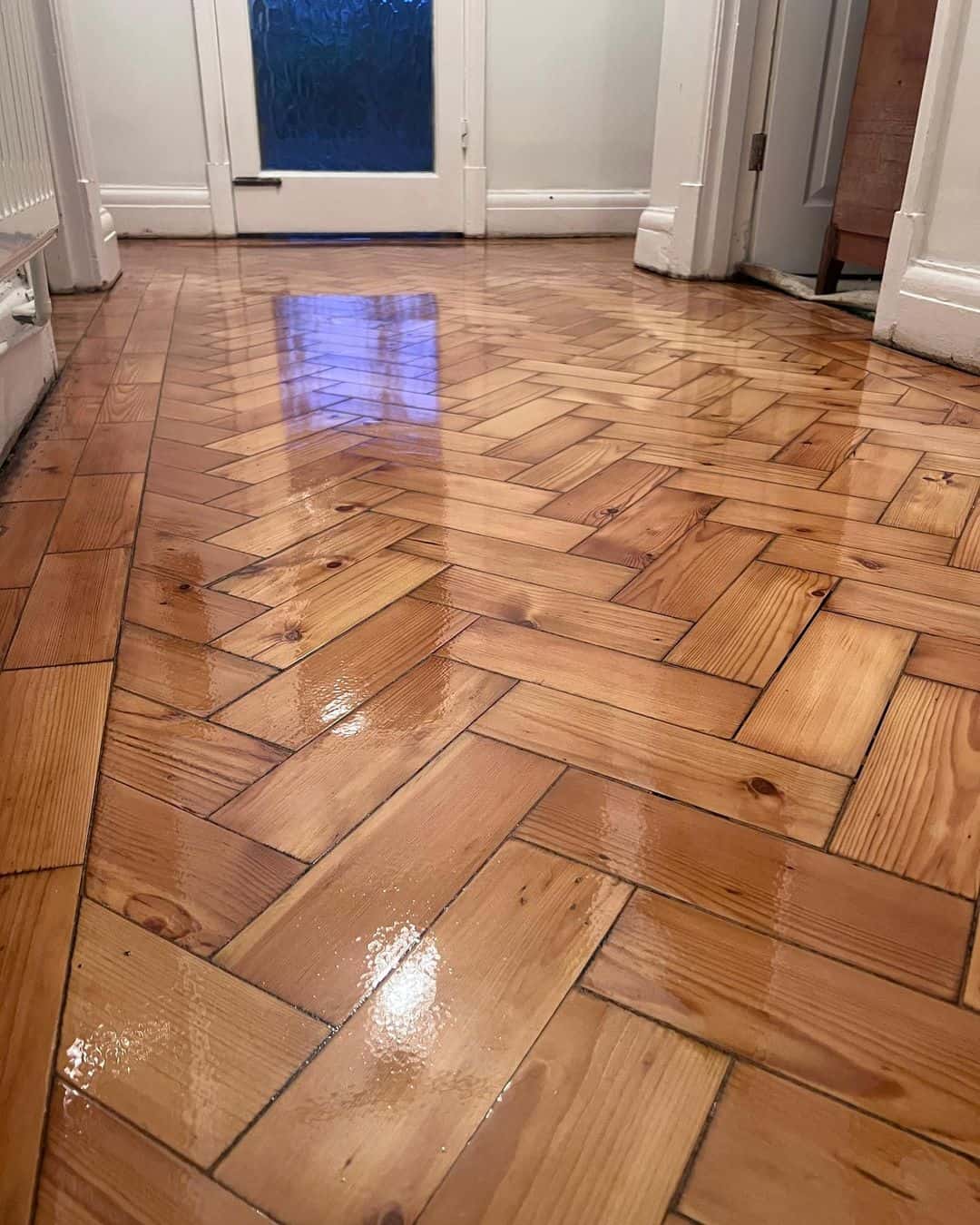Some home cleaning experts suggest using vinegar and baking soda to clean hardwood floors. Conversely, others advocate its use can damage the wood-protective polyurethane, resulting in hardwood being exposed to the surroundings.
If you’re wondering about using vinegar to clean, remember that vinegar has an acidic pH and can damage the polyurethane coating on hardwood floors.
In this article, we’ll be reading about how vinegar can be used to clean your property’s hardwood floors, preventative care tips, and a hardwood maintenance routine you can follow to keep the wood floor clean and sparkling.
Table of Contents
Can You Clean Hardwood Floors With Vinegar?
How You Can Clean Hardwood Floors with Vinegar?
Before reading further, there are several things you must understand. Firstly, Vinegar is acidic and can easily damage the shine and glare on your hardwood flooring if used without diluting in water.
The second consideration is to know the type of wood finishes on the flooring. A quick way to check the type is by pouring a few drops of water on the flooring. If the water sits there, you have sealed flooring, and a water-based floor cleaner would do the job. However, if the water gets soaked by the wood, you might have unfurnished wood, or the sealant has worn out.
The method we share here works best for pre-fabricated wood and must be avoided on unfurnished hardwood. Lastly, test the vinegar-cleaning solution in an inconspicuous spot and notice the cleaner’s effects on the surface. Testing before cleaning ensures you’re on the right track.
Things You’ll Need:
- One gallon of water
- 200 ml of distilled white vinegar
- Microfiber dust mop
- Bucket
- Broom
- A vacuum cleaner without a beater bar
Step 1: Removing Dirt and Debris
Start by removing loose dust, debris, grime, and soil from the floor using a soft-bristled broom, microfiber dust mop, or a vacuum cleaner. Please avoid using the beater bar, as it can scratch the urethane or any other hardwood finish.
While each dust removal method works, cleaning experts recommend using a microfiber dust mop. The microfibers on the damp mop can effectively trap dirt and easily clean afterward.
Step 2: Preparing Your Vinegar Solution
Take a bucket of water and pour one gallon of warm water. Then, mix the white vinegar into the water-filled bucket, and your natural hardwood floor cleaner is ready to use.
Step 3: Mopping the Floor

Dip a clean microfiber mop into the cleaning solution’s bucket. Ensure the mop is not dripping wet, and start mopping from one corner and cleaning the entire floor while moving toward the door.
Rinse and dip the mop again in the bucket when you see too much dirt and grime sticking to the microfiber cloth. Leave the mopped area to air-dry before using it.
Other types of vinegar you can use include cleaning vinegar and apple cider vinegar. On the contrary, avoid using red wine or balsamic vinegar to clean wood floors.
Step 4: Cleaning Hardwood Floor Cracks
Poorly installed and worn-out floors trap a significant amount of dust and grime. Removing the dirt trapped between the wood boards is time-consuming but yields fruitful results. Take an empty bowl and mix two cups of warm water with 70 ml of distilled white vinegar.
Now take a soft-bristled brush, dip it in the cleaning mix, and start working on the floors, starting from one corner of the room. Keep a soft cloth nearby to wipe the scrubbed-off grime.
How to Avoid Damaging Hardwood Flooring
- Install floor protectors on the furniture to avoid damage when you move or use the furniture.
- If you want to keep the hardwood finish glare, you should limit the pets from entering the wood flooring area.
- If you feel comfortable, remove the shoes before entering because small dirt particles trapped in the shoe soles can easily scratch the wood finish.
- Don’t leave standing water or liquids like wine, as it can deteriorate the wood’s durability. The same protocol applies to any other type of liquid.
- Always use cleaning equipment specifically designed for wooden flooring. For example, a hard-bristled broom used to clean the driveway is never a good pick.
- The excess water from wet mops can seep into the cracks in the wood finish, formed due to wear over time. Make it a priority to prevent the wood from soaking unnecessary moisture, and sweep the water off using a sponge mop.
- Before using any wood floor cleaning product, ensure you follow the provided instructions to achieve optimum results. Invariably, refrain from using the wrong cleaning product.
The Right Way to Clean Wood Floors

Here are some routine cleaning and floor maintenance tips you follow to prolong the wooden floor’s life.
1. Sweep the Floor
Sweep the floor daily to ensure no dirt or grime clings to the surface. Making the entire premises dust-free is necessary because dust particles left behind will eventually spread to already clean areas during movement.
2. Vacuum the Floor
Use a standard vacuum with soft-bristled accessories to gently remove the dirt buildup from every corner and hard-to-reach area of the floor.
Besides following this cleaning routine daily, remember to mop the hardwood floor at least twice a week. Avoid using too much water or an abrasive cleaning solution when mopping the wood floor.
3. Maintaining Unfurnished Floors
Varnished, oil-treated, lacquered, and unsealed floors require more maintenance than sealed floors. These surfaces are mostly treated with wax to make them resistant to moisture. Homes with surface-sealed floors can use a mixture of soap and water to wipe clean the floor.
Wax is applied to give the floor surface a smooth visual outlook. Here’s how you can wax your unsealed wood floor.
- Using a floor stripper, scrape off the old wax from the wood panels.
- After completely removing the old wax, let the floor dry.
- Once dried, apply a new coat of wax on the wood floor and let the wax dry.
Liquid and paste wax are the most suitable choices for an untreated wood floor. On the contrary, please avoid using acrylic or water-based wax, which will lead to wood discoloration.
4. Mopping the Floor

Most surface-sealed floors have a coating of polyacrylic, urethane, or polyurethane to keep water and stains at bay. While your floor installer might have recommended a floor cleaner, you can use other options, like a simple dish soap and water mix. The soapy water mix is mild and won’t leave any abrasive effect on the flooring.
5. Steam Cleaning Hardwood Floors
A steam cleaner is feasible if you have cement, sheet vinyl, or ceramic tile flooring. However, most types of hardwood floors don’t go well with steam cleaners because of the high temperature and moisture.
You can only use a steam cleaner for your wood floor when it’s sealed properly. When using the cleaner, please set it to the lowest temperature setting while releasing a minimum amount of steam.
Final Thoughts
You might find several other floor cleaning solutions, but remember that using the wrong cleaning liquid can damage the hardwood floor. For example, acrylic polishes dull the polyurethane coat, whereas murphy oil soap leaves residue.
In our opinion, the best approach is first to know the type of hardwood floor, gear up with the right equipment, and use a natural cleaner like the vinegar solution or wood floor cleaners for the best results.
Refer to this handy guide before giving your hardwood floors a good scrub – and double-check that you aren’t using tools that cause any potential damage whether you use vinegar or not.
Got any other tips on how to clean hardwood floors? Have you found any magical solutions that did the trick? Let us know in the comments below!